This is a series about the shorter PC games I’ve completed or abandoned recently.
The Forgotten City
Developer: Modern Storyteller | Released: 2021 | Genre: Adventure, First Person
A well produced and highly acclaimed sort of light RPG, albeit with minimal actual fighting – and then only with a bow. It took place in an underground roman city some 2000 years ago, and the many multi-step quests and dialogs with NPC made it feel a lot like Skyrim.
I later learned it actually started as a Skyrim mod, but was then ported to the Unreal Engine.
Arriving back in time via a portal, I quickly learned that the underground city was being surveilled by a God that demanded that everyone respected the Golden Rule. This rule dictated that if any of the inhabitants performed a sin, everyone would die. It was simple really. Kill anyone, steal anything, and a booming voice sounded from above. Everyone started turning into gold statues and the magistrate ran to a specific building to summon a portal. If I got up there in time, I swooped back to just arriving again.
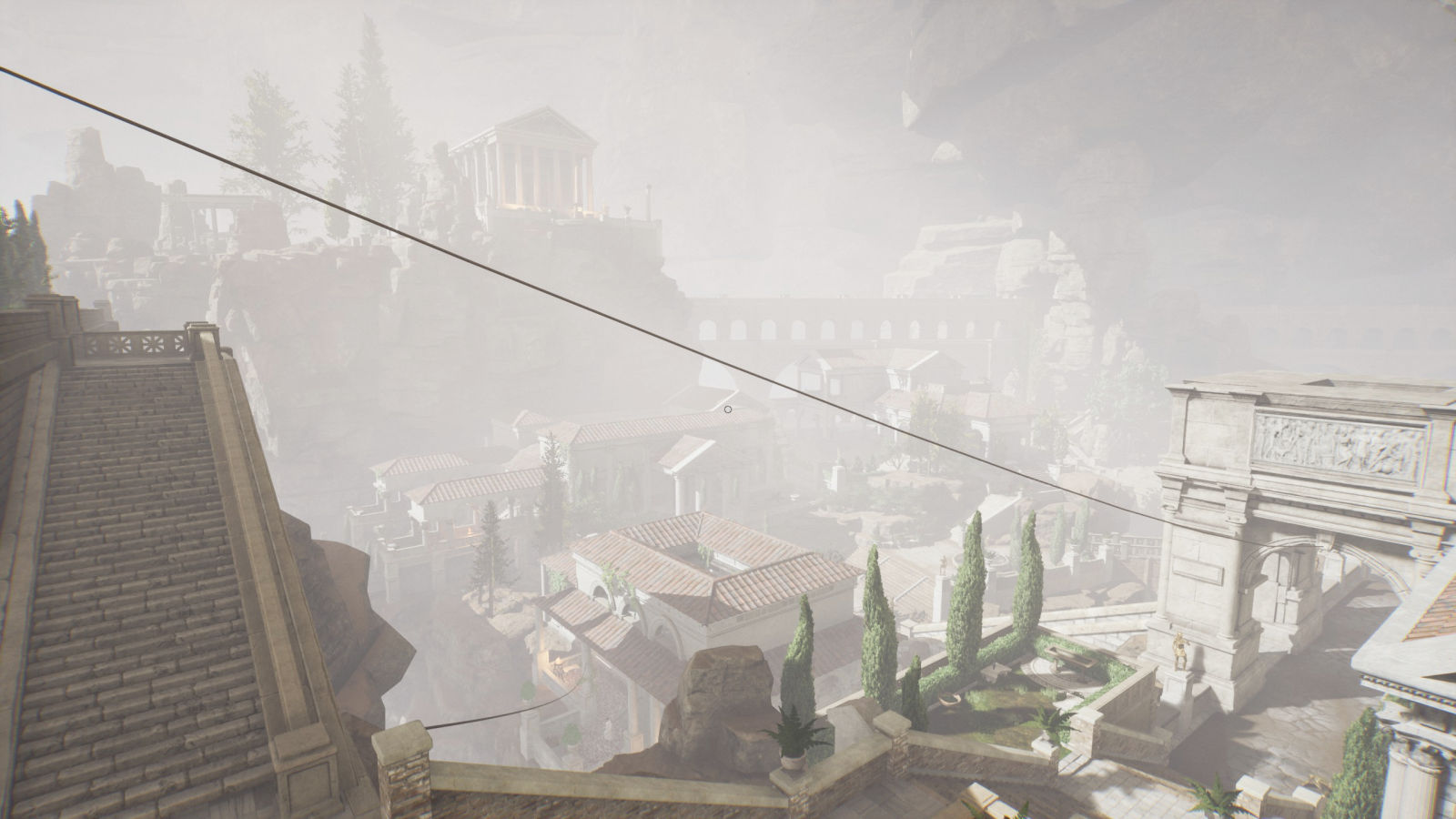
There were about 20 humans or so in the city and there were a ton of main and secondary quests. Most of the quests had multiple steps and quite a few of them were quite lengthy and challenging. However, some of them were also too much in that regard and I was frequently stuck. It was exacerbated by sometimes having to revisit grayed out dialog choices to find new options hidden in the deeper layers.
To make up for that, the writing of the dialog was mostly brilliant.
The city was big and with epic roman architecture, and some of the NPC had their own agendas, walking around to solve certain tasks. The music was excellent too – orchestral with high pitched singers. Especially one of the melodic themes was terrific – I never got tired of listening to it.
I absolutely loved how Galerius was always ready close to the portal after looping back in time, with a lot of dialog options for automatically solving the important quests I had completed in the previous loop. He then ran around and quickly brought everything up to speed.
If only Outer Wilds have had that amazing feature.
One of the main quests pivoted around an election that was actually quite complex. I had to find some dirt on an evil opponent, and then I had to make sure his replacement got popular enough to win the election. This involved having to solve a lot of secondary quests for people, and that’s where looping back had me offer Galerius the same quest solutions, thereby making him get the honor instead of me.
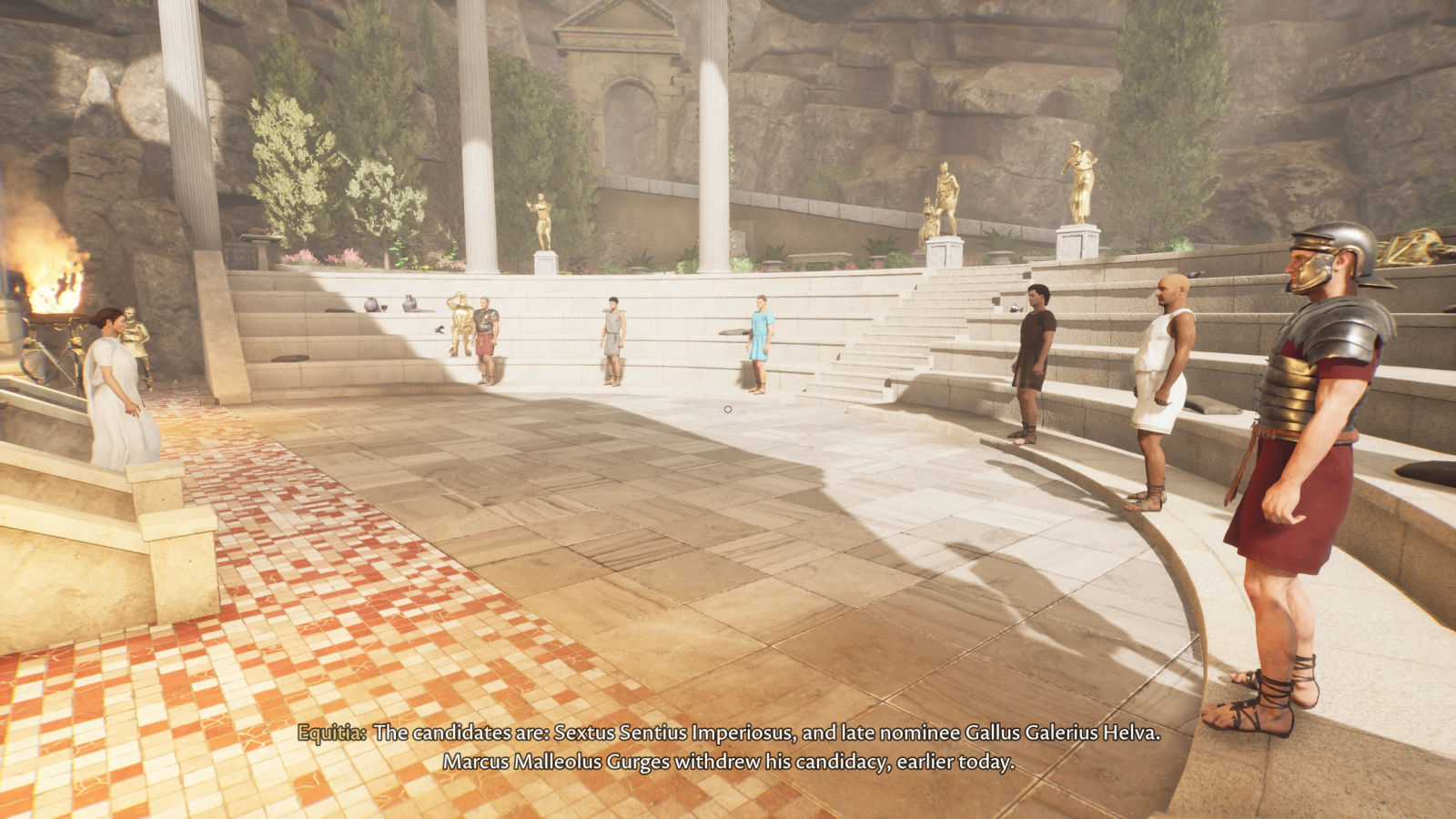
Which was fine – he was the one that had to be elected, not me.
As soon as I got Galerius elected, he immediately had the intellectually challenged Dius released from his cell. Although this made Dius give me a cistern key I needed, the moron also immediately beelined towards something valuable and stole it, thereby breaking the Golden Rule. Back to the portal again.
And damn, Galerius could be hard to find when I needed him.
I liked that the discussion with the hermit in the underground cave got quite philosophical at one point. The same cave system also led into dark tunnels where I had to use my bow to shoot gold zombies. This was made challenging by them running in between gold statues – NPC frozen in time from long ago.
Needless to say, they looked a lot like each other.
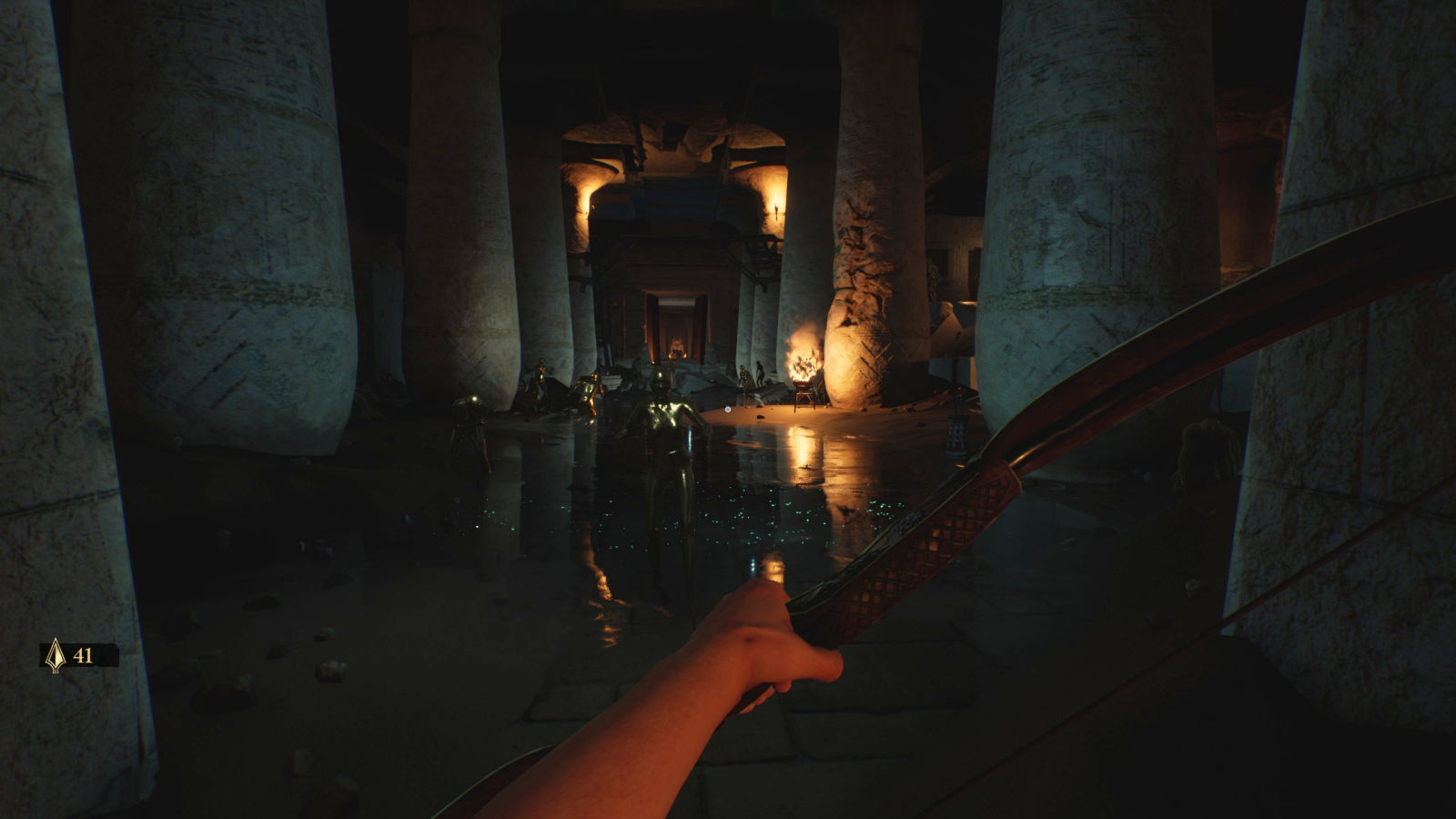
There were vines that could be climbed here and there in the city, but the game claimed I was too heavy. At first I thought I needed to roll a different kind of character. Later, a few video reviews showed me that I just had to obtain the golden bow and then shoot those vines to turn them into gold. This made them sturdy enough for climbing. In fact, it wasn’t the only thing the golden bow was useful for.
I knew I shouldn’t have turned down the quest to steal that bow.
One thing I was rarely fond of was how some NPC easily got miffed if I said the tiniest wrong thing to them, after which they refused to talk to me anymore. I have a feeling the developers allowed this because the NPC would be reset after a portal loop anyway. I still thought it was annoying.
After the first portal loop, Galerius gave me a handle bar for using zip lines.
I got ending #2 after about 9.5 hours of play – the one where only Sentilla and I survived.
The day after receiving ending #2, I played some more to get the canon ending #4.
This time I accepted stealing the golden bow. I noticed I had to distinguish two lights to create darkness, so that the God couldn’t see me swapping the bows in the hands of a statue. Cute.
Soon I was dumped into a dungeon and then entered the inside of an enormous palace. It was teeming with zombies and I had to either shoot them in the head or turn them into gold by shooting duckweed at their feet. This was by far the most extensive combat-oriented part of the game.
After putting the four plaques in the obelisk, I entered a big temple and found the God sitting in a science fiction throne room that looked completely different from the rest of the game.
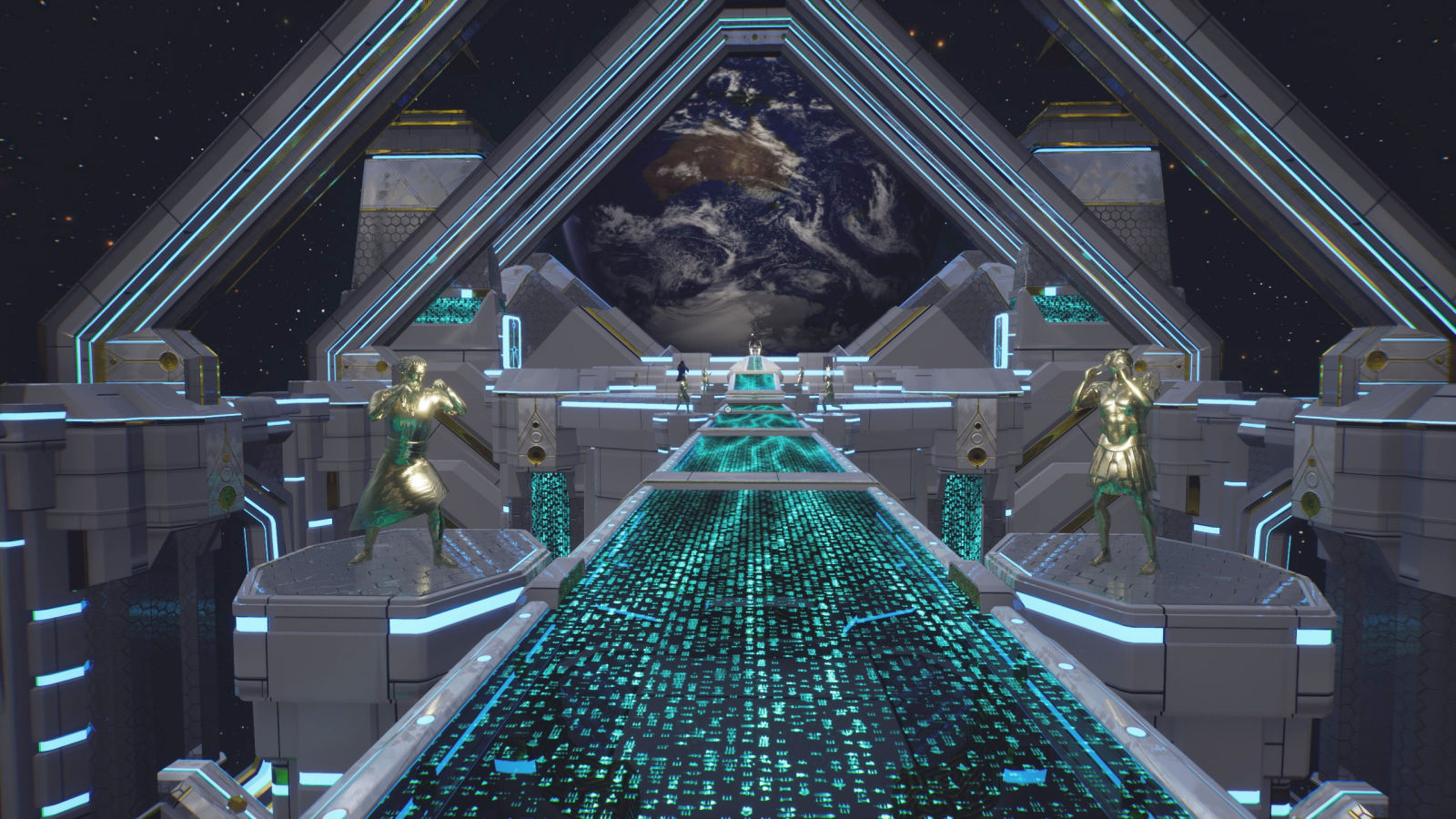
I tried reaching the canon ending by choosing the right dialog options for convincing the God to abandon the Golden Rule, but it sure wasn’t easy. There were a ton of choices and the God had a lot to say when answering some of them. To make matters worse, I sometimes had to sort of backtrack the dialog options to make sure I had the right option in the end.
I honestly thought this was overdone. Less dialog options here would have been better.
But it was worth it. The ending back brought me back to the current day, and one year later I visited a large museum where almost all the inhabitants of the roman city were brought up to speed. They were now wearing modern clothes and had modern jobs, and all of them were thanking me for rescuing them. It was a terrific feel-good epilogue. Well, actually, maybe it was a little too joyous.
It was the kind of ending Steven Spielberg would have loved to use.
Pentiment
Developer: Obsidian Entertainment | Released: 2022 | Genre: RPG, Adventure
Incredibly stylish 2D side-scrolling medieval game and generally acclaimed. It was another one of those that had overwhelmingly positive users reviews on Steam. Yet, it didn’t really grab me.
The design and user interface was wonderful, no doubt about that. I especially liked the way all dialogue was written out with a scribbling sound effect, after which the letters were filled in – depending on the font used. Sometimes there was a typo, which corrected itself after a second or two.
I was playing as the artist Andreas Maler, working on a commission in a scriptorium near the church in the town. In the beginning, some dialog options with people had me select one out of a few options for deciding his backstory – like what languages he spoke.
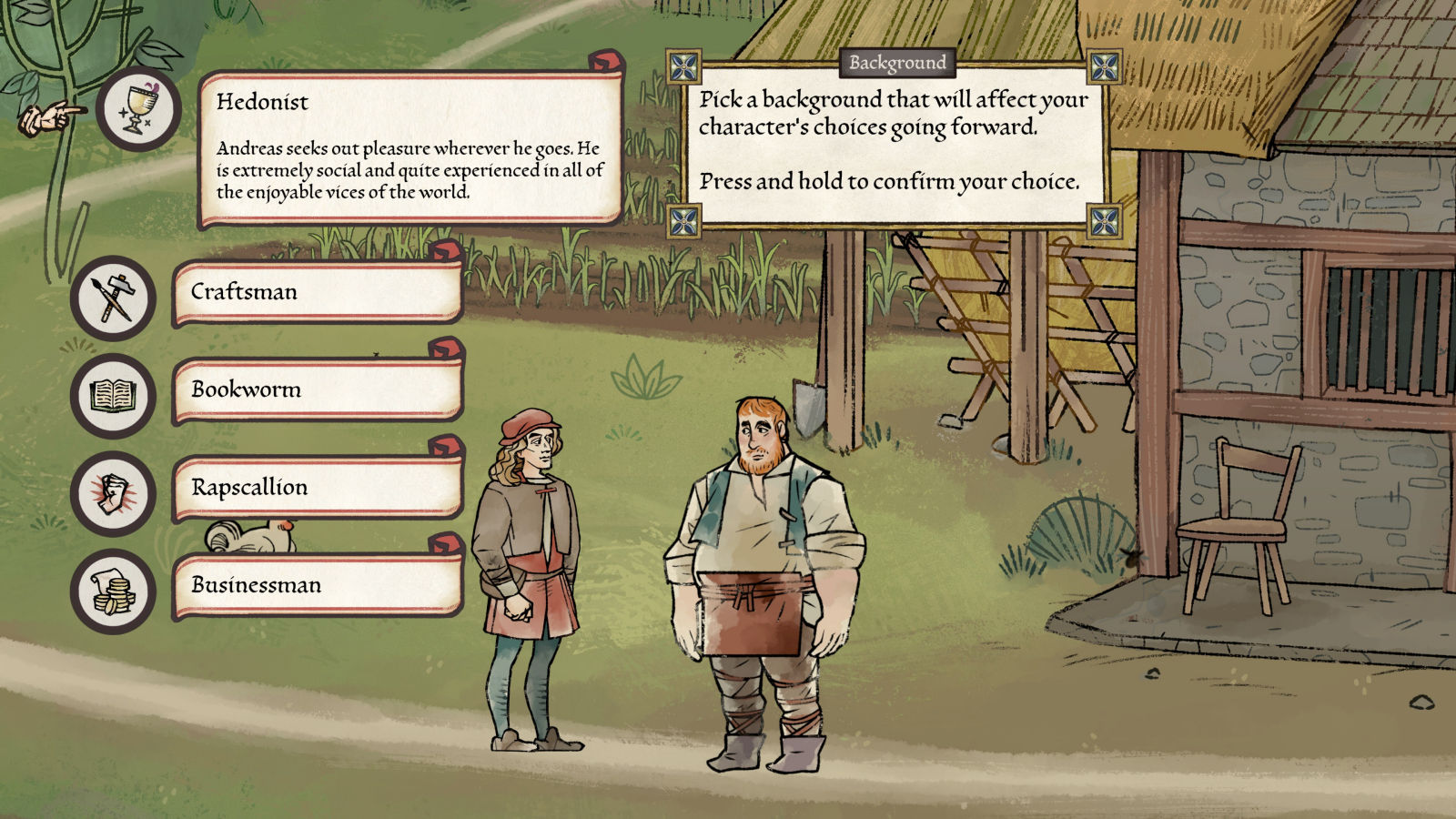
The game was very dialog heavy. Most NPC I met on my way had a lot to say, and most of them referred to history bits from the time period in which the game took place, which was 1518. Some dialog sentences even had hyperlinks. Clicking one zoomed out the screen to show an overlay with an explanation.
However, the immense amount of NPC dialog made it feel like a visual novel, and the history and religion of the time period also failed to grab me. I guess I’m more of a science fiction guy than a history buff.
I had heard that a murder mystery spiced things up, so I played for almost four hours. It did get slightly more interesting having to follow leads and interview people, but I didn’t like how I never had enough time to check up on all leads. Eating, sleeping and houses closing shut frequently got in the way. It encouraged multiple playthroughs, but that’s not how I want to enjoy games.
SIGNALIS
Developer: rose-engine | Released: 2022 | Genre: Shooter, Top-down
This was another highly praised game with virtually no thumbs down to be found among the many user reviews on Steam. But while I did find it fascinating enough to complete it – especially due to the excellent survival horror atmosphere and most of the puzzles – it certainly had its fair share of flaws too.
As a top-down survival horror game, it was clearly inspired by the early Resident Evil and Silent Hill. Using low polygon graphics and washed out textures, it felt like it wanted a port on the first PlayStation to look entirely feasible. It did have a certain charm. I especially liked how the flashlight lit up dark rooms.
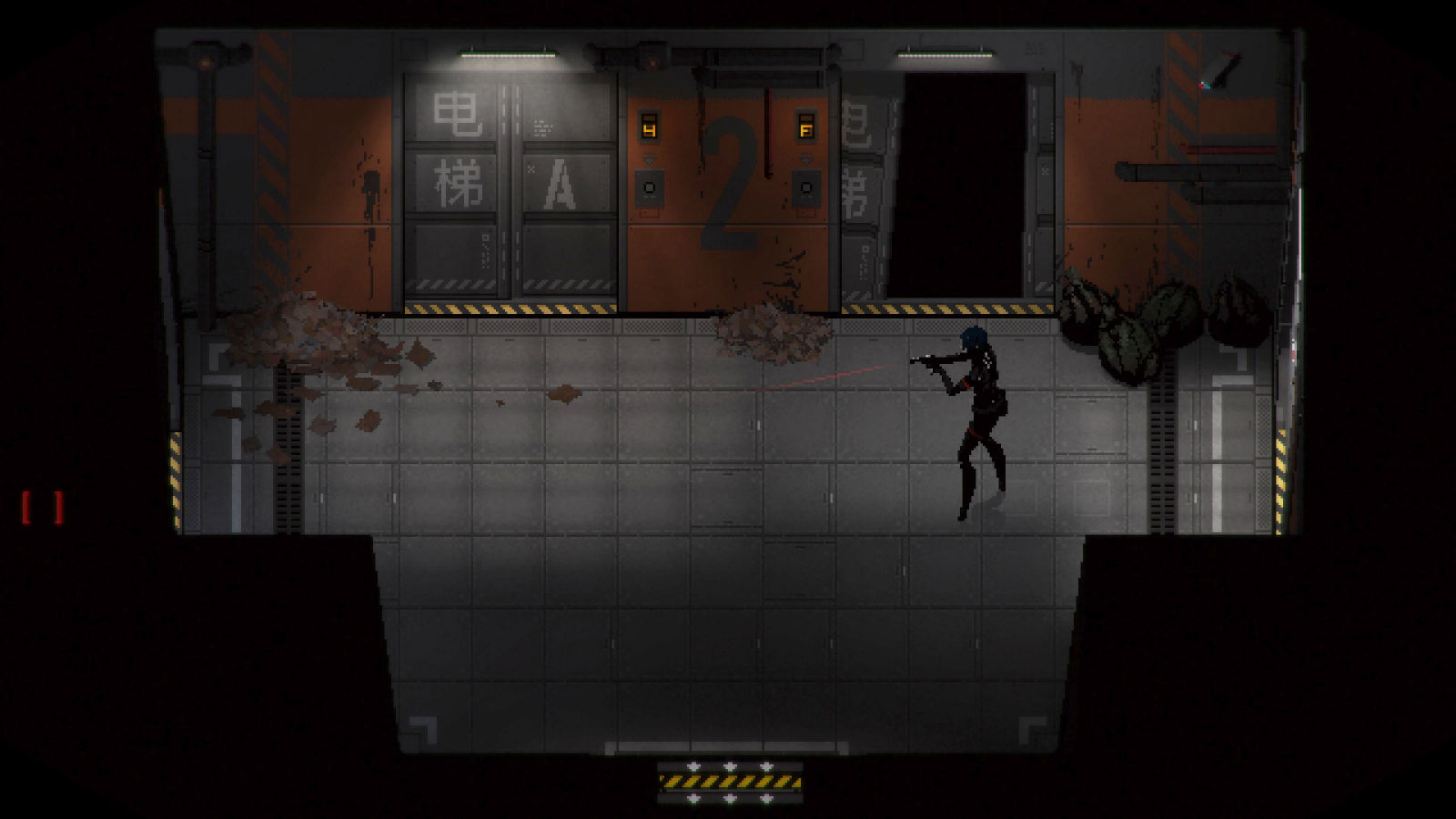
The majority of the game was about navigating lots of rooms and hallways on several floors, all requiring me to open doors that sometimes also required finding a key card. Some of the rooms had zombie-like monsters, only slightly faster and sometimes even armored. I could find weapons and ammo, but they were very scarce and thus it often made more sense to just run past the monsters.
Unfortunately, shooting a monster (and then kicking it to make sure it was out) was usually just a brief respite. Sometimes passing through the same room again made one or two get up for more shooting. Yes, that kind of respawning. It was a party trick that got old really fast.
By far the most annoying flaw of the game was the inventory. It only had six slots, and there was a ton of key cards, ammo, defensive rods, puzzle items and so much more to pick up. It was possible to store some of the lesser used items in a checkpoint save chest, but it didn’t mend the problem much. Too often the game had me pick up ammo and stuff on the way to a room far away, after which I no longer had room for picking up an important key. Back to the chest again and dump some stuff – and then of course, some of the monsters respawned while backtracking to it.
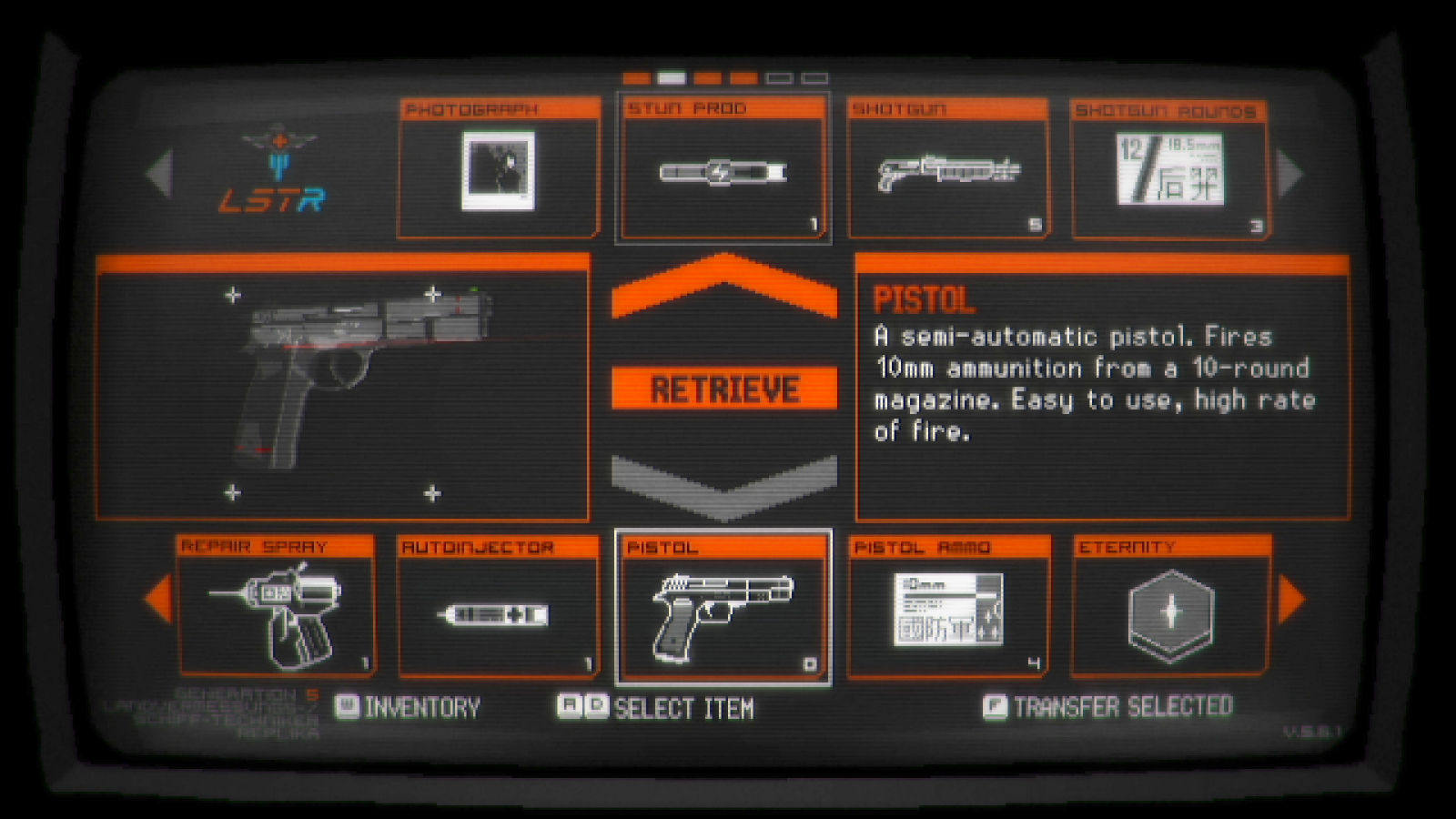
That is, until I had played about 80% of the game then randomly went into the options only to discover there was a setting for expanding the inventory to nine slots. It helped enormously. Why didn’t I spot this setting earlier? Wait. Maybe destiny wanted me to rant about the six slots?
Well, mission accomplished. Ahem. Let’s move on.
Most puzzles I figured out by myself. There were a lot of refreshingly unique puzzles, such as a couple making use of the radio frequencies for producing sound waves or music for affecting a device. But often I just had to find the right puzzle items for opening an important door.
Without spoiling anything, let’s just say the game is longer than you think. No, really. It. Is. Longer. Than. You. Think. I’m not sure I liked how the game engineered that event. It was almost too clever for its own good. A brave idea indeed. If they had not hijacked the… no, forget it. Play the game and you’ll see.
The Fidelio Incident
Developer: Act 3 Games | Released: 2017 | Genre: Adventure, First Person
A light first person adventure that didn’t take even 2 hours to complete. It was made in Unreal Engine and had great graphics and excellent Irish voice overs, especially from the protagonist that commented on almost everything he went through.
I was in a plane that crashed among mountains with freezing temperatures. The part of the plane with his wife got thrown elsewhere, and I had to walk around in the snow, desperately trying to find her.
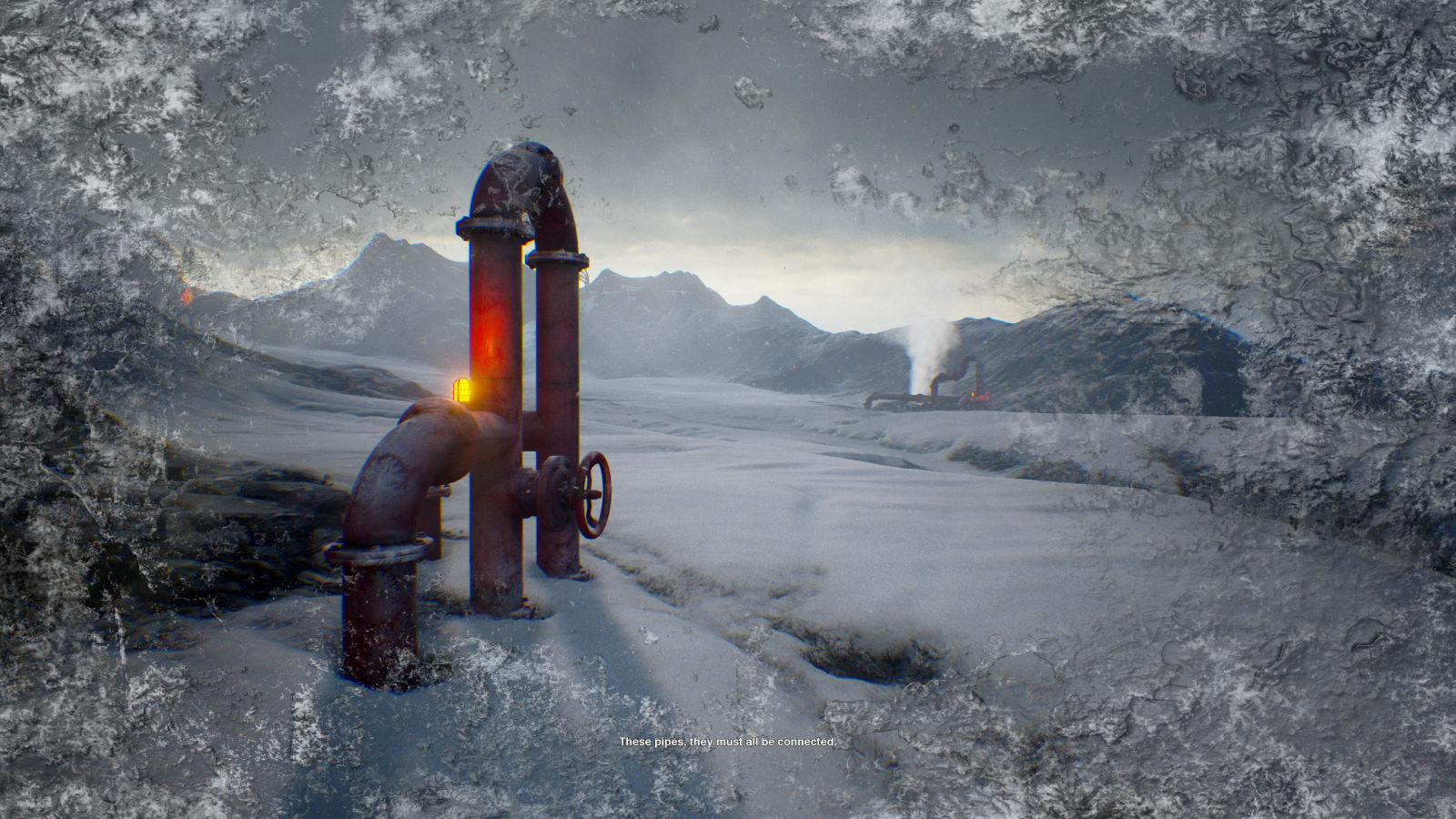
Staying too long in the cold built up ice on the screen, and it was actually possible to die from freezing to death. There were also light puzzles such as using wheels on red pipes to create steam or unlocking a padlock, but the game honestly felt a lot like a walking simulator.
It also had a separate story, partly told through journal pages found by the fires from the plane (where I could also get some warmth) and through dreamy flashbacks.
Virginia
Developer: Variable State | Released: 2016 | Genre: Adventure, First Person
Another short game – barely 2 hours long. I really wanted to like this one. The simplistic 3D art and the animations were oozing style, and the symphonic music was downright awesome.
However, the story about an FBI woman secretly investigating her partner while trying to solve a murder mystery fell flat for me. It was too meandering, with lots of dream sequences, and the complete lack of dialog didn’t always make it easy to understand what was going on.
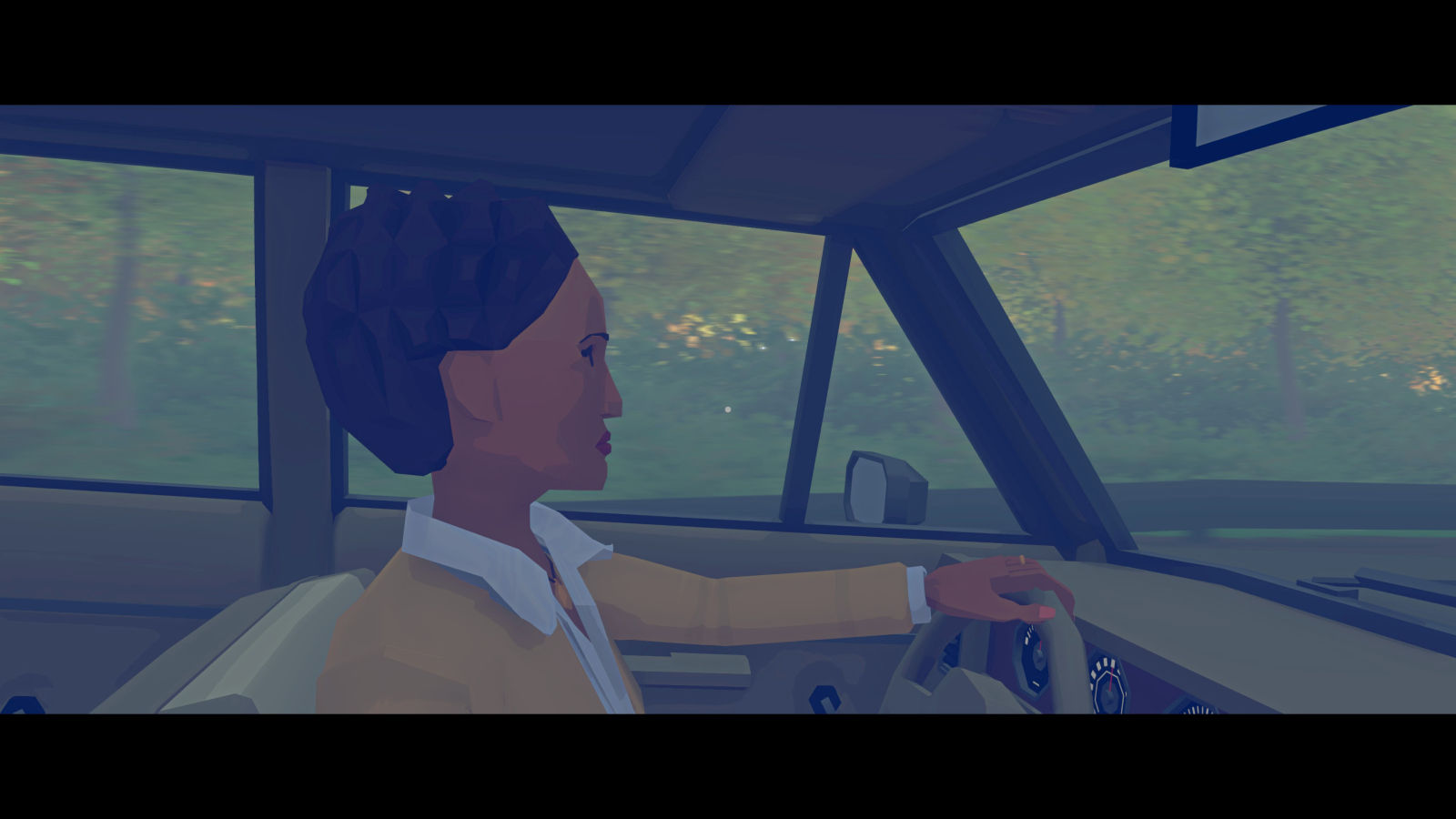
The game felt like it really wanted to be an animated movie. It changed scenes like a finger snap. I could be walking down a hallway, and suddenly I was in the passenger seat in a driving car. The camera was also shaking a bit, as if wanting to convey all the twists and turns performed by the protagonist, and perhaps to establish a deliberately low frame rate. The game even advised against increasing the fps.
I got used to both things, but the story never did it for me – and that was a damn shame because the music performed by a symphonic orchestra was so well done. It fit the scenes and the action perfectly, and the game clearly set out to tug at my deepest emotions. I really wish it had succeeded.
See also: Short Sessions, Part 20


